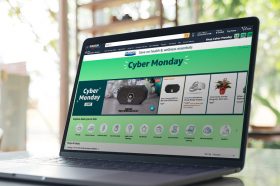Resources - Blog
Key E-Commerce Dates to Know for 2020

Stay on top of the latest e-commerce and marketplace trends.
As 2019 winds down and you begin analyzing your year-over-year business performance to inform your 2020 strategy, it will remain critical to know your audience, particularly the days when their engagement and purchase levels will be higher due to holidays and key shopping events.
In this quick overview, we provide a handy reference list of the main dates to keep front of mind in 2020, given that they tend to go hand in hand with an increase in traffic, clicks, and conversions.
Not only should you confirm your inventory position is strong prior to these events, but you can also use the dates to inform your quarterly sales plan, as a reminder to update your product detail page content to incorporate holiday keywords, and ensure your pricing is competitive so you do not run the risk of missing out on a sale.
Q1:
- New Year’s Day, Jan. 1
- Valentine’s Day, Feb. 14
- International Women’s Day, March 8
- Holi, March 9
- St. Patrick’s Day, March 17
Coming off the holiday season, sometimes Q1 — January specifically — demonstrates softer sales. However, it does not have to. If you get your advertising campaigns in place prior to the key Q4 dates such as Black Friday and Cyber Monday, you can maximize the “halo effect” that results from impactful ad campaigns and carry that momentum into the new year.
You can retarget any customers that engaged with your products over the holidays but did not purchase as well as prepare any products in your catalog that perform well on days such as Valentine’s Day and St. Patrick’s Day.
Q2:
- Easter, April 12
- Earth Day, April 22
- Mother’s Day, May 10
- Memorial Day, May 25
- Father’s Day, June 21
During the spring, prepare any deals specifically catered to parents, as both Mother’s Day and Father’s Day occur in Q2. Given that Amazon Prime Day has historically taken place in July, you can also begin to take any necessary steps to optimize your Amazon store for the uptick in sales and traffic as well as apply for any time-bound promotions such as Lightning Deals or 7-Day Deals.
Q3:
- Independence Day, July 4
- Amazon Prime Day, which will likely fall in mid-July
- Back to school season, which consumers will also likely kick off in July to be more consistent with Amazon Prime Day sales
By slotting Prime Day in mid-July, Amazon has successfully shifted consumer buying behavior by pushing up the bulk of back to school shopping by nearly a month. Choosing that timeframe for the massive online shopping event and releasing some of the deals and discounts in advance has pushed competing retailers to release their special pricing and promotions at the same time, driving more purchases earlier and granting consumers the opportunity to plan out their purchases over a longer period of time.
By July, parents know what their children will need for the upcoming school year, making the days leading up to, of, and following Prime Day optimal times to capitalize on the deals. By piggybacking back to school deals on Prime Day, Amazon is appealing to Prime members and back to school shoppers — and those that are both — at the same time.
As a brand or retailer on Amazon, the proper planning can help you transform the “summer slump” into a hugely successful quarter for your business. Q3 is also an optimal time to begin your inventory planning and product detail page optimization for Q4.
Q4:
- Halloween, Oct. 31
- Singles’ Day, Nov. 11
- The “Cyber 5,” notably Black Friday and Cyber Monday, Nov. 26-30
- Hanukkah, Dec. 10-18
- Christmas, Dec. 25
With Halloween and Singles’ Day kicking off the Q4 busy season, make sure your advertising promotions are in place and you have stock of your top-performing products. If you sell via Fulfillment by Amazon (FBA), also be on the lookout for an announcement from Amazon regarding when inventory will be due to Amazon fulfillment centers for the “Turkey 5” as well as for Christmas.
Lastly, the year is not over once those five key days from Thanksgiving to Cyber Monday are complete — be sure to engage with last-minute shoppers through the end of the year to help keep your brand and products front of mind in 2020.
Learn what Feedvisor can do for your business.
When you partner with Feedvisor, you automatically receive access to our true, AI-driven technology and hands-on team of e-commerce experts. Contact one of our team members today to learn more about our end-to-end solution for brands and large sellers on Amazon, Walmart, and e-marketplaces.



